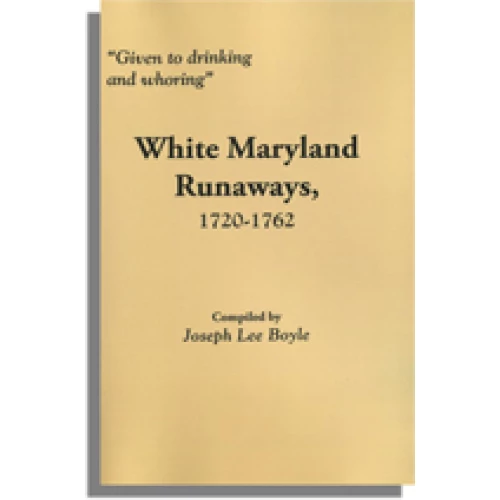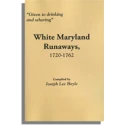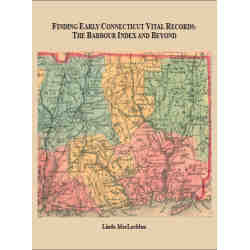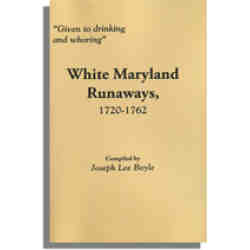Description
The work at hand covers the period prior to that covered in Joseph Boyle’s previous volumes of colonial Maryland runaway servant records: “Drinks hard, and swears much,” White Maryland Runaways, 1770-1774, published in 2010, and “When drunk, is very bold,” White Maryland Runaways, 1763-1769, published in 2011. Almost twice the size of either of the aforementioined books, “Given to drinking and whoring,” White Maryland Runaways, 1720-1762 incorporates between 1,500 and 2,000 Maryland runaway servant advertisements–naming 4,000 persons in all–that appeared in nineteen colonial newspapers published in New Hampshire, Massachusetts, Rhode Island, Connecticut, New York, Pennsylvania, and Maryland.
As the author notes in his historical introduction, by one estimate between 350,000 and 500,000 colonists came to America as compulsory laborers. Some came as indentured servants, others as convicts. The transportation of servants into Maryland, in particular, reached its height in the middle of the 18th century, while convicts arrived there in ever-increasing numbers prior to the onset of the American Revolution. For the investors who underwrote the transportation of forced labor–brokers, ships’ captains, landowners–the risks to their investment included death in passage, injury, chronic maladies, and running away. Out of necessity, colonial newspapers carried ads offering rewards for the apprehension of runaways and/or notices about their capture.
According to Mr. Boyle, “The runaway ads provide a first-hand view of history, as well as valuable demographic information with the age, sex, height, place of origin, clothing, occupation, speech, as well as physical imperfections, etc. They often display attitudes of the owners, and personality traits of the runaway, such as a common affection for alcohol. Some ads give extensive vignettes of individuals with their perceived idiosyncrasies. They provide a bonanza of information for the social historian. Those interested in tracking their ancestors will also find a goldmine of details.”
While the overwhelming majority of the runaways named were from Maryland, the author includes out-of-state fugitives when the papers refer to them. Besides the carefully transcribed ads themselves, researchers will benefit from Boyle’s extensive bibliography and a comprehensive name index.







Reviews
There are no reviews yet.